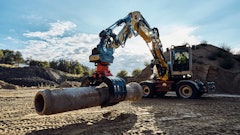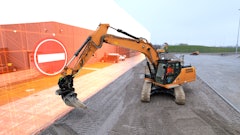
In today's highly competitive market, companies that deploy vehicle fleets are discovering a new avenue for enhancing profitability: fleet connectivity. Presently, the management of large fleets – whether for delivery services or ride-sharing or any other purpose – is fraught with complexities and high costs.
However, the advent of new technologies that facilitate real-time data sharing between vehicles and dispatch offices is changing the game. By integrating tech-enabled vehicles into a cohesive network, businesses can streamline operations and significantly reduce operational expenses.
With a network of tech-enabled vehicles, companies can have more control and oversight of their fleets. Through this network, vehicles can share real-time data with one another and transfer data to the cloud, where dispatchers can access it for monitoring and analysis. Both drivers and fleet managers can receive real-time data on everything from weather conditions to idling time to traffic congestion.
To enable all this data transfer, companies need to focus first on connecting vehicles over a network. While vehicle manufacturers and software companies are currently preoccupied with AI, I believe we need to also focus on connectivity and cloud access, enabling data collection and transfer in real-time. Only then can companies analyze the data using machine learning algorithms to generate powerful insights on fleet safety and efficiency.
Connecting Vehicles
Enabling fleet connectivity involves creating a system in which vehicles can communicate with a central platform and with each other. This communication allows for real-time data sharing, tracking, and analysis, which ultimately helps in improving efficiency, reducing costs, and enhancing safety. To achieve this level of connectivity, companies need to take several key steps.
The first step is installing physical telematics hardware in each vehicle or, alternatively, embedding software in a vehicle’s ECU. Either way, these tools collect data from the vehicle and transmit it to a central system for further processing. These devices often include GPS receivers for real-time location tracking and onboard diagnostics interfaces to gather information about vehicle performance.
With the data collection capabilities in place, the next step involves integrating this data with a fleet management system (FMS). The FMS is a central software platform designed to process and analyze the data. It provides fleet managers with a dashboard where they can monitor vehicle locations, track driver behavior, schedule maintenance, and analyze various metrics like fuel consumption and vehicle health. This system serves as the control center for fleet operations, allowing for better decision-making and resource management.
To enable seamless communication, a cloud-based infrastructure is also essential. Cloud platforms offer scalable storage and computational power, allowing fleet data to be transmitted, processed, and analyzed in real time. They also provide remote access, enabling fleet managers to oversee operations from anywhere with an internet connection.
Cost Savings
A well connected network of vehicles will generate a wealth of valuable data. This includes information about engine performance, fuel efficiency, oil levels, tire wear, brake wear, road surface friction, and other critical components. By continuously monitoring these parameters, an FMS can detect trends and patterns that indicate potential problems and support predictive maintenance, in which businesses address potential problems before they become actual issues.
For example, if a vehicle's engine temperature starts to trend higher over time or if fuel efficiency drops unexpectedly, either could be a sign of a developing problem. Similarly, unusual vibrations, strange noises, or increased braking distance can signal the need for maintenance. Predictive maintenance can significantly reduce repair costs and extend the lifespan of fleet vehicles. This leads to a more efficient and cost-effective fleet, with vehicles spending more time on the road and less time in the repair shop.
 Using real-time data and advanced algorithms, fleet managers can optimize routes to reduce fuel consumption and delivery times.@metamorworks - adobe.stock.com
Using real-time data and advanced algorithms, fleet managers can optimize routes to reduce fuel consumption and delivery times.@metamorworks - adobe.stock.com
Connected fleets also offer ways to improve efficiency. For instance, idling is one of the most expensive activities in a fleet, wasting valuable fuel. Fleet management allows dispatchers to monitor idling time with advanced algorithms and identify areas for improvement – like setting up new policies for drivers regarding when is acceptable to leave a vehicle running, or when to shut an engine off.
Additionally, there are opportunities for route optimization. Using real-time data and advanced algorithms, fleet managers can optimize routes to reduce fuel consumption and delivery times. This efficiency not only cuts costs but also allows fleets to handle more deliveries with the same resources, increasing revenue potential.
Vehicle fleets operating like a hive mind, with vehicles communicating among themselves, represent a significant technological feat. This level of connectivity demands robust infrastructure, sophisticated software, and significant resources. Despite these challenges, the benefits to fleet efficiency and safety are significant. Once you tap into the potential, the opportunities of fleet connectivity are practically limitless.


























